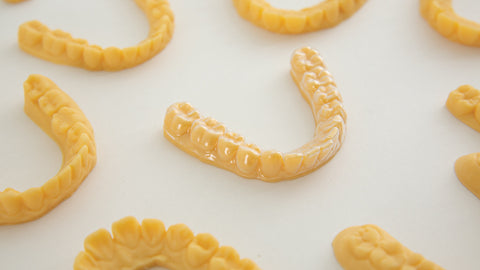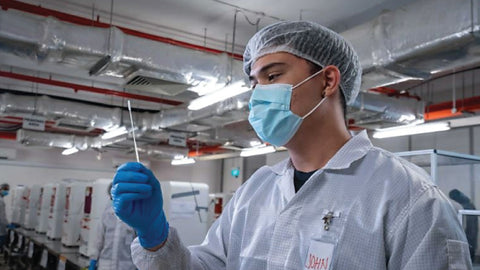How Does 3D Printing Fit Into Your Dental Workflow?
October 14, 19 | 3 mins read
In our previous blog post, we highlighted the ways that technology has changed how the dental industry operates. There are increasingly more adopters of digital dentistry and if you have yet to join in on the revolution, read on to know how 3D printing can fit into your current dental workflow.
To better understand where 3D printing fits in a dental workflow, we have to start at the very beginning of the digital thread.
Step 1: Digital impressions – Intraoral Scanning
The digital thread begins with the capturing of a digital impression. This process is done using an intraoral scanner that captures a series of digital images of a patient’s mouth that records their dentition and bite relationship. High resolution digital images coupled with the immediate availability of a visual representation of the patient’s dentition allows the dentist to immediately diagnose the problem at hand and potentially begin prescribing a treatment plan, all while reviewing the entire case with the patient.
Step 2: Treatment Planning
Once the digital impression is captured, which on average does not take more than 10 minutes (a far cry from traditional impression taking methods), the dentist can then show the patient the results of the scan on-screen and begin discussing treatment plans. For basic orthodontic treatments (Eg. Clear aligners for minor realignments), most scanning software out there today also comes with basic tooth movement planning functionality which can be utilized. By planning the treatment with the patient present, this will ensure a much higher customer satisfaction and eventually case acceptance rate. The next step is to export the digital file to prepare for milling/printing of the dental model for appliance manufacturing.
Step 3: 3D Printing of Dental Models for Appliance Manufacturing
Where the proverbial digital thread ends. The digital file is transformed into a physical dental model for appliance manufacturing. This is where 3D printing steps in. Lots of modern day dental laboratories these days equipped with 3D printers will accept digital files from practices for their appliance manufacturing. 3D printing, alternatively known as additive manufacturing is preferred here due to the nature of the process which encourages low material wastage (printing only utilizes the exact amount of material needed to manufacture a model) as compared to milling (subtractive manufacturing) that results in a lot of material wastage which is not an efficient use of material.
Among the dental appliances that can be produced using 3D printing today whether directly or indirectly through a secondary process such as thermoforming include die fitting models, surgical guides, splints, and perhaps the most widely used buzzword in orthodontics today, clear aligners.
Benefits of digital dentistry
There are numerous benefits of going digital, both to practices and patients alike. For dental professionals, the accuracy achieved by intraoral scanners and 3D printing will reduce the amount of time you need to re-take an impression or redo an appliance. By removing the human factor out of the impression taking and model making process, we significantly reduce these risks that will eventually lead to savings in costs as well in the long run. Going digital also means that you will be working with digital files instead of physical stone models, which plays a significant impact when it comes to archiving and keeping case records.
Whereas for patients, going digital simply means that they will be able to cut down the number of clinic visits, reduce the amount of time spent in chair and increase predictability of overall treatment outcome, which really is the most crucial factor when it comes to technology adoption in dentistry.
Understanding the digital workflow allows you to utilize it to assist you in your day to day business. When properly implemented, it can significantly cut down the number of tasks you have on hand and allows you to focus on enhancing technical capabilities to better serve your patients.
Ready to capitalize on 3D printing?
Check out our Clear Aligners: A 3D Printing Story series where we go through the orthodontic appliance that took the world by storm which was made possible by 3D printing.



